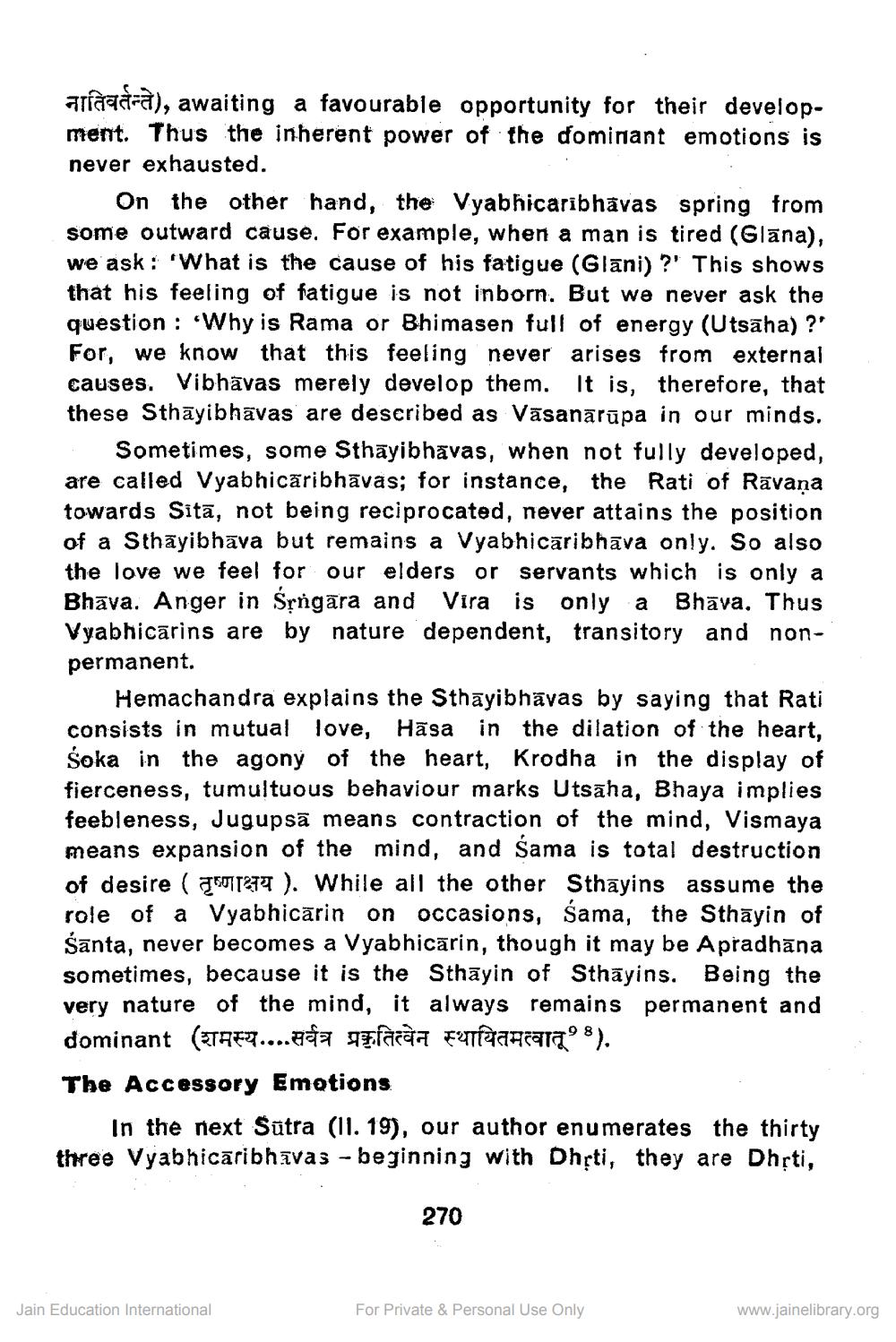________________
aaaa), awaiting a favourable opportunity for their development. Thus the inherent power of the dominant emotions is never exhausted.
On the other hand, the Vyabhicaribhavas spring from some outward cause. For example, when a man is tired (Glana), we ask: 'What is the cause of his fatigue (Glani)?' This shows that his feeling of fatigue is not inborn. But we never ask the question: 'Why is Rama or Bhimasen full of energy (Utsäha) ?" For, we know that this feeling never arises from external causes. Vibhavas merely develop them. It is, therefore, that these Sthayibhavas are described as Vāsanarūpa in our minds.
Sometimes, some Sthayibhāvas, when not fully developed, are called Vyabhicãribhāvas; for instance, the Rati of Rāvana towards Sitā, not being reciprocated, never attains the position of a Sthayibhāva but remains a Vyabhicāribhāva only. So also the love we feel for our elders or servants which is only a Bhāva. Anger in Sṛngara and Vira is only a Bhāva. Thus Vyabhicarins are by nature dependent, transitory and nonpermanent.
Hemachandra explains the Sthayibhāvas by saying that Rati consists in mutual love, Hasa in the dilation of the heart, Soka in the agony of the heart, Krodha in the display of fierceness, tumultuous behaviour marks Utsaha, Bhaya implies feebleness, Jugupsã means contraction of the mind, Vismaya means expansion of the mind, and Sama is total destruction of desire (1). While all the other Sthayins assume the role of a Vyabhicarin on occasions, Sama, the Sthayin of Santa, never becomes a Vyabhicarin, though it may be Apradhāna sometimes, because it is the Sthayin of Sthayins. Being the very nature of the mind, it always remains permanent and dominant (शमस्य....सर्वत्र प्रकृतित्वेन स्थायितमत्वातू ' 8 ).
The Accessory Emotions
In the next Sutra (11.19), our author enumerates the thirty three Vyabhicaribhāvas - beginning with Dhṛti, they are Dhṛti,
Jain Education International
270
For Private & Personal Use Only
www.jainelibrary.org




